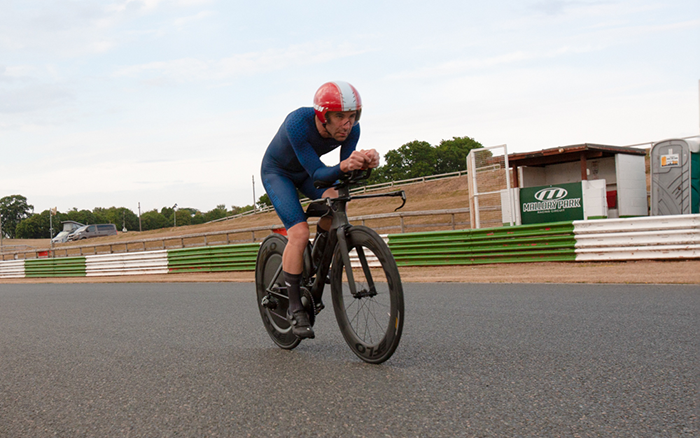Tire pressure seems to be personal. It makes sense, given that the tire pressure you should be riding takes into account your tire, your bike, your weight, and the road you’re riding on. But we often find the rider isn’t taking all those variables into account but inflating based on old theories or feel instead. So, if us suggesting, “LOWER YOUR TIRE PRESSURE” makes you feel uncomfortable, read on. (If it doesn’t, and you just want to find your ideal tire pressure, the link is at the bottom 😉)

Tire Pressure and Mechanical Efficiency
Improving your mechanical efficiency turns more of your watts into forward motion. Tire pressure is responsible for either wasting watts because you’re bouncing up and down or saving you watts (and time!) so you glide over the road efficiently.
Tire Pressure Basics
10 years ago it was suggested to set tires to 120 psi. Today, we know a lot more and know it’s more nuanced than that. It’s kind of like a Goldilocks story.
If your tire pressure is too high, your tires bounce over the small imperfections in the road surface, despite its flat appearance. The point at which the tires start to bounce is called the impedance break point. Once that point is reached, your rolling resistance spikes, slowing you down (even if you feel faster).
If your tire pressure is too low, your contact patch is too large and causes more friction, in turn more energy to move you forward.
I hesitate to even mention if tire pressure is too low because what we know based on extensive research is that it’s better to be below the impedance break point than above AKA lower pressure is better.
Tire Pressure and Temperature
Temperature impacts tire pressure. If you pump your tires up in your hotel room at 68 degrees Fahrenheit and then race in 105 degrees Fahrenheit, your tire pressure will increase close to 7 psi. This could easily put you over the impedance break point. TIP: Set your pressure at the expected race temperature.
Tire Pressure and Elevation
Elevation also affects tire pressure. However, most races are near the same elevation we train or lodge ourselves before a race. Unless you are living at sea level and plan to race at 14,000 feet, elevation will not impact your tire pressure much. TIP: Set your pressure at race elevation.
Setting Your Tire Pressure
Step 1: Find your ideal tire pressure using our tire pressure chart on each wheel product page.
Step 2: Ride for a few minutes to warm up the tires. This simulates race conditions.
Step 3: Inflate tires to ideal pressure while tires are still warm. If you have a race, do this as close to race start as possible. For super accurate tire pressure check out our FLO Air Gauge.
Wheel 1:1
You’re up to speed on tire pressure but selecting the ideal pressure can be confusing. If you’d like to discuss tire pressure for your next triathlon, please schedule a Wheel 1:1.

Co-founder at FLO Cycling. Jon manages the day to day operations and acts as the lead engineer for all FLO products.
